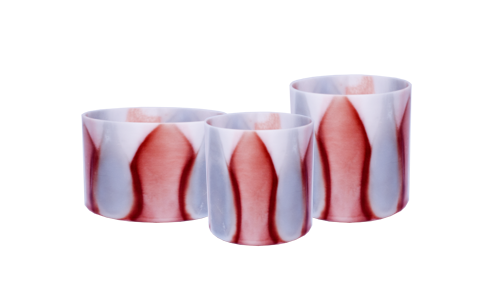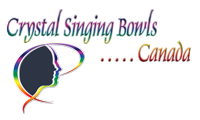 |
 |
 |
Enter a frequency between 27.5Hz (A0) and 14080Hz (A9). |
|||
Note equivalancy when A = 440hz. |
Note ? |
- A440 (also known as Stuttgart pitch) is the musical pitch corresponding to an audio frequency of 440 Hz, which serves as a tuning standard for the musical note of A above middle C, or A4 in scientific pitch notation. It is standardized by the International Organization for Standardization as ISO 16. While other frequencies have been (and occasionally still are) used to tune the first A above middle C, A440 is now commonly used as a reference frequency to calibrate acoustic equipment and to tune pianos, violins, and other musical instruments.
- Before standardization on 440 Hz, many countries and organizations followed the French standard since the 1860s of 435 Hz, which had also been the Austrian government's 1885 recommendation. A440 was recognized as a standard in 1834 after the "tonometer" was invented to measure pitch, and it was approved by the Society of German Natural Scientists and Physicians the same year.
- The American music industry reached an informal standard of 440 Hz in 1926, and some began using it in instrument manufacturing. In 1936, the American Standards Association recommended that the A above middle C be tuned to 440 Hz. This standard was taken up by the International Organization for Standardization in 1955, being formalised in 1975.
- It is designated A4 in scientific pitch notation because it occurs in the octave that starts with the fourth C key on a standard 88-key piano keyboard.
- A440 is widely used as concert pitch in the United Kingdom and the United States. In continental Europe the frequency of A4 commonly varies between 440 Hz and 444 Hz. In the period instrument movement, a consensus has arisen around a modern baroque pitch of 415 Hz (with 440 Hz corresponding to A♯).
Note equivalancy when A = 432hz. |
Note ? |
- 432 Hz. The magic number everybody is talking about. It is said to be the natural frequency of the universe, to have cosmic healing powers and to attract masses of audience to our music. Just by tuning our music less than a semitone below our standard A=440Hz we are promised direct access to the universe's hidden treasures.
- Fiction: Ancient instruments such as Tibetan bowls, Pythagoras monochord, ancient flutes, have been found to use 432 Hz as their base pitch.
- Fact: Hertz is a modern term coined in 1930. Before that it was referred as “Cycles Per Second”. The first time “Cycles Per Second” could be accurately measured was in 1834, when two instruments were invented: the (remodeled) Savart Wheel by Félix Savart, and the Tonometer by Johann Scheibler.
- Further than that—the measurement of Seconds has only begun during the late 16th century.
- Ancient Tibetans, Pythagoras and anyone before 1834 could not have intentionally tuned their instrument to measure 432 Hz as this frequency scale simply did not exist at the time.
- Fiction: Pythagoras’ A was 432 Hz.
- Pythagoras’ tuning system is ratio based. It is not based on an absolute pitch, but rather on the relations from an arbitrary reference pitch. We already know Pythagoras could not have known what a second is, so he could not know what Hz meant. Indeed 432 is a multiplication of the ratio between C and A, where C is 1 and A is 27/16 which is the same as 432/256—however this applies to any base frequency and has nothing to do with a specific Hz.
- Pythagoras’s tuning system was based on cycling perfect fifths. However, cycling fifths will never get you to complete a circle—unless one of the fifths is diminished. In other words, the Pythagorean scale has to be 'tuned-down' a little each octave in order to maintain its consistency. This makes the temperament uneven and sound “off” when playing music with complex harmonies, and this is exactly the reason it was abandoned.
- Fiction: Mozart used 432 Hz for all of his music.
- The only evidence for Mozart’s A comes from an ancient tuning fork from 1780 with the tone of A=421.6 Hz. This tuning fork belonged to the Viennese piano builder Johann Andreas Stein, the leading piano maker in Vienna at the time, who was responsible for Mozart's pianos as well as Haydn’s and Beethoven’s. It is likely that they have all used A=421.6Hz.
- Handel’s personal pitch fork was found 30 years earlier in England and was tuned to A=422.5Hz - pretty close to Mozart! and pretty far from 432 Hz.
- Fiction: Verdi has used 432hz for all his music.
- Verdi used several tunings across his life. As an opera composer he was aware of the pitch inflation (pitch standards rapidly rising to achieve a brighter orchestral sound) that was happening in his time, and was concerned it was putting a strain on singers voices as they struggle to hit the high notes on a score.
- Verdi has requested his Requiem to be tuned to 435 Hz (according to the 1859 French “diapason normal” standard) and in a later letter he has expressed a slight preference for 432 Hz. Verdi is the only known composer to even hint towards 432 Hz, and it was obviously for completely different reasons than cosmic spirituality.
- Fiction: 432 Hz is the way everybody used to tune in the past, but we have now forgotten the ancient wisdom of our ancestors.
- Musicologist Alexander John Ellis has searched, measured and documented ancient pipe organs and tuning forks. the only mention of 432 Hz was proposed in Italy in 1880 (by Verdi), and we already know that this was done for practical reasons rather than spiritual ones. The fact is that before standardization, the pitch of A fluctuated heavily between 400 Hz and 460 Hz.
- Fiction: 432 Hz is the frequency of the heart / brain / earth / sun / water
- The frequency of the heart fluctuates between approximately 1 Hz to 2.5Hz. It does not have a steady frequency that can be multiplied to achieve 432 Hz.
- Brainwaves or Neural Oscillations range between approximately 1 Hz and 70 Hz and are not tuned to 8 Hz or other divisions of 432 Hz in any way.
- The Schumann resonance is a set of electromagnetic oscillations that originate from earth. One of them currently resonates at an average of 7.83Hz and not 8 Hz. which if multiplied by 55 gives us an A=430.65 Hz. Close, but no cigar.
- Astronomers at Stanford have recorded super sonic oscillations from the sun at around 5.964 GHz. They had to slow them down (change their pitch) by 42,000 times to accidentally hit the frequency of 142 Hz - and not 144 as claimed by some which would again bring us a frequency of A=426Hz.
- Water molecules can vibrate in a wide band of extremely high frequencies close to the infrared spectrum (90–110 Tera Hz). The band is wide enough to not favor any specific frequency, let alone 432 Hz.
- Fiction: Goebbels and the Nazis tried to take over the world with A440Hz.
- In fact, it was the British Standards Institute who arranged an international conference in London 1939 where it was internationally agreed for A=440Hz to be the standard.
- Fiction: Cymatics—the unexplored scientific realm, provides images as proof for 432 Hz being the frequency of water/universe.
- In fact, it was the British Standards Institute who arranged an international conference in London 1939 where it was internationally agreed for A=440Hz to be the standard.
- There have been several videos and images out there presenting beautiful cymatic imagery as proof for the 432 Hz theory. However these images are produced by resonant bodies (water or metal plates) which can be tuned to resonate at different frequencies.
- This means that metal plates or bodies of water that are tuned to resonate at 440 Hz (just like a string on a guitar) will produce lovely cymatic shapes at… you guessed it, 440 Hz!
- The geometric shapes are created due to a well known phenomena called standing waves.
- Fiction: Your music will sound better at A=432Hz
- Musical aesthetics is a flexible thing. Musicians are not obligated to use 440 Hz as their base frequencies, and many orchestras around the world use different pitches according to the music they are about to play. It is generally agreed that baroque music is to be played at around A 415Hz, classical and early romantic eras at around 425 Hz and later repertoire at 440 Hz and up.
- Tuning to different pitches has subtle effects on the timbre of acoustic instruments, but makes no difference to electronically generated sounds.
Note equivalancy when C = 1hz. |
Note ? |
- By now, you realize that the "standards" are created by humans based upon their current knowledge. This changes as we learn more. I became curious about these standards and did some "playing". I believe strongly that "We are all one" - just different drops in a large ocean. Each drop in the ocean has slight differences but they are all ocean water. We know there are slight differences because of the differences in flora and fauna inherent in the various areas. Human beings are also all one with Source, however our frequencies differ due to the life lessons we have contracted to learn. "One" is the magic number.
- Once I recognized the number one as a key, I wondered which note/chakra corresponded with the 1 hertz. I used the standard calculations to identify the notes and found that the note of C or the Root chakra was closest to the number one. This isn't really surprising as so much of our experience on this physical plane is tied to the degree of safety we have.
- The calculation was off by decimal places so, recognizing that the premise was a human construct, I reversed the calculation and started at one. This resulted in A=430.538965hz. This is very close to the Schumann resonance as indicated above. The Schumann Resonance is a set of electromagnetic oscillations that originate from earth. One of them currently resonates at an average of 7.83Hz which if multiplied by 55 gives us an A=430.65 Hz.

